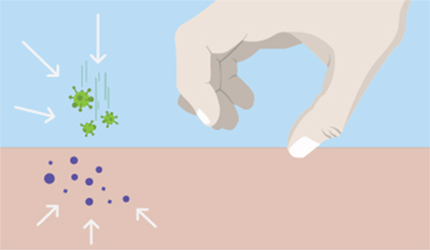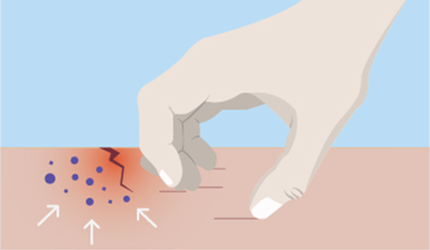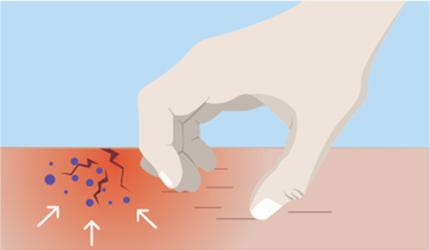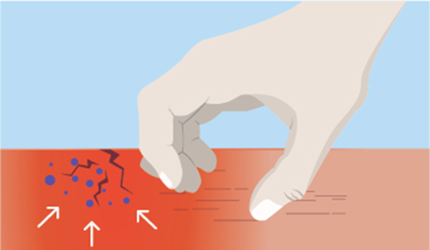While the redness and rash of atopic dermatitis
are visible on your skin,3 the
real story may be happening beneath the surface.2
Atopic dermatitis is more than a skin condition.
It's a disease caused by an overactive
immune system that leads to inflammation in your body.5
It is the internal inflammation that causes the
symptoms you know.6
Atopic dermatitis is called the “itch that
rashes” for a reason.7
While scratching may offer short-term relief, in
the long run you're actually making your
atopic dermatitis—and the itch—worse.7
This is called the itch-scratch
cycle.7
Your skin has 3 layers.8
In healthy skin, the tough outer layer called the
epidermis keeps foreign substances such
as bacteria, viruses, and allergens from getting in.8
When you have atopic dermatitis, the outer layer
of skin is weaker and more susceptible
to inflammation caused by immune cells in the body.2
The damage done by scratching also contributes to
the breakdown of skin cells, making it
easier for foreign substance to get in.5
Once these foreign substances have broken through
the skin barrier, immune cells alert
the body it’s under attack.5
These immune cells travel to the lymph nodes,
which are in the second layer of skin,
called the dermis. Once in the lymph nodes, these immune cells
activate your body's defenders, called T helper
cells.5
The immune cells release substances that cause
the familiar redness and rash on the
skin's surface.5
Although these substances normally go away after
a short time, if you have atopic
dermatitis, the cells don’t switch off like they should.
Instead, they continue the inflammatory
process, so the skin continues to react, even when the skin looks
clear.5
Even when you have no visible rash, the
underlying inflammation is still active beneath
your skin.5
The itching leads to scratching, which further
weakens the skin cells in the epidermis,
allowing more foreign substances to get in and increases your risk
of infection. And the itch-scratch cycle
continues.5







